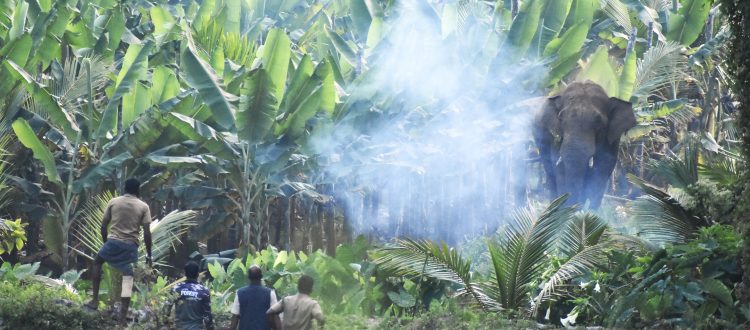Living with elephants in Wayanad
For millennia, Human and elephants have coexisted, sharing the same landscapes and resources. Over time, however, these interactions shifted towards conflict, due to changes in human perspectives, increasing anthropogenic pressures on forested areas and increased competition for shared resources. Elephants have continuously adapted to overcome any preventive strategies, requiring us to keep on changing our conflict mitigation tactics.
Human – elephant interactions in Wayanad, Kerala
People in Kerala have a deep attachment towards elephants. These gentle giants retain a sacred place in the hearts of the people and are an important part of their religious traditions too. Devotees flock to temples across the state to behold and receive blessings from these magnificent creatures that are decked with bright costumes, bells, and diamonds. But in captivity, these intelligent and sensitive animals are often denied conditions that are natural and important to them.
Wayanad, the hill district of Kerala, situated between 700 and 2,100 amsl, is nestled among the mountains of the Western Ghats on the eastern region of the state. The district’s economy thrives on subsistence & commercial agriculture, particularly rice and pepper, as well as coffee, tea, coconut, plantain, and cardamom. It is also a landscape that supports more than 250 elephants, across the 1,172.45 km2 area of the Wayanad Elephant Reserve.
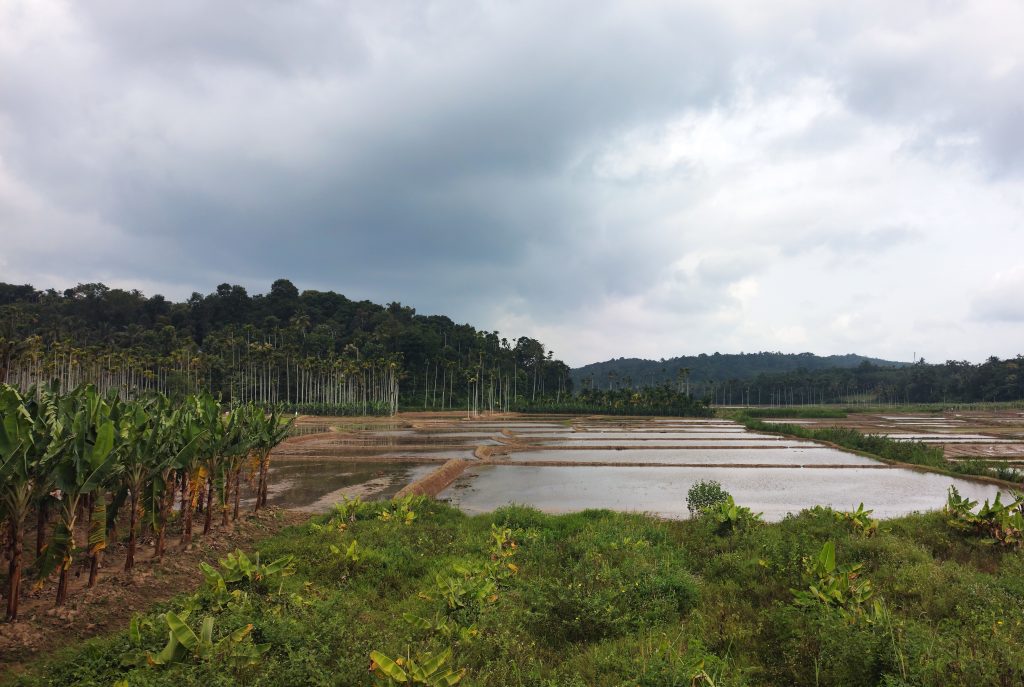
Farmlands in the forest fringes of Wayanad | Photograph by Sujnan MK/WTI
Given that most farmlands in the district are situated alongside forested areas, elephants have naturally been drawn towards human habited landscapes. Crop raiding has been the major driver of negative human-elephant interaction in the region. Traditional techniques to tackle this involve guarding farms, with farmers spending several nights in the fields during the harvest season. This vigilance is complimented by various other techniques for crop protection, including the use of loud drums and fire crackers to scare away elephants. Installation of man-made barriers such as fences and trenches too have been attempted but the techniques keep on evolving.
After spending a year working as a wildlife biologist with Wildlife Trust of India, studying human-wildlife conflict, I’ve come to appreciate this unique relationship between humans and wildlife. I have had the opportunity to attend and investigate conflict situations, interacting with the affected, collecting environmental data and understand the efficacy of various deterrents.
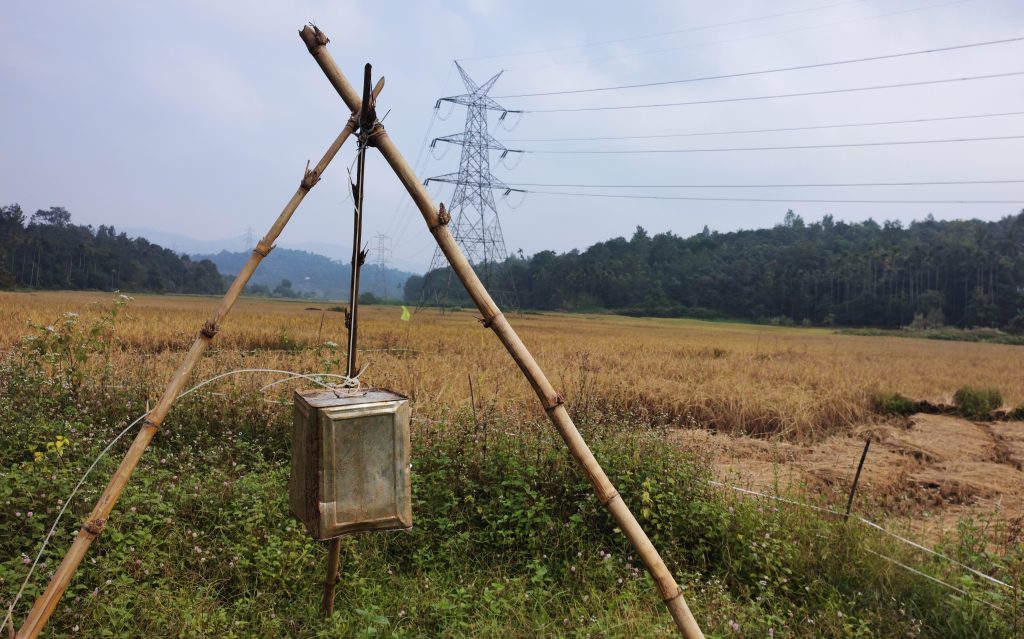
Metallic sound detterents for elephants along farmlands in Wayanad | Photograph by Sujnan MK/WTI
Traditional warning systems, watches and guards
A common and widely practised method is through traditionally built watch-sheds and watch towers. Glass bottles and other metallic objects tied to the farmland fences (wire or rope) produce warning sound when animals approach. Domestic dogs are also stationed to detect the animal’s presence. Once an elephant is detected, tower guards make loud sounds by shouting, banging drums, or bursting crackers to scare them away. Additionally, high-powered torch beams aimed at the eyes of elephants is used to deter their movement into the farmlands. The efficiency of this technique however relies heavily on human resources and the expanse of the farm.
Another warning system involves ‘cracker and stone’ where the movement of fence wire triggers the falling of a stone onto a cracker, causing a loud blast. Cigar lighters are also used to generate the loud blasts using the compressed gas. These methods often deter animals including elephants, wild boars, and spotted deer. However, it has been observed that the elephants have learned to avoid triggering the alarms by carefully reaching out with their trunks to consume the crop present along the borders. To counter this, farmers have now started installing solar lights around farmlands to detect elephants at night.
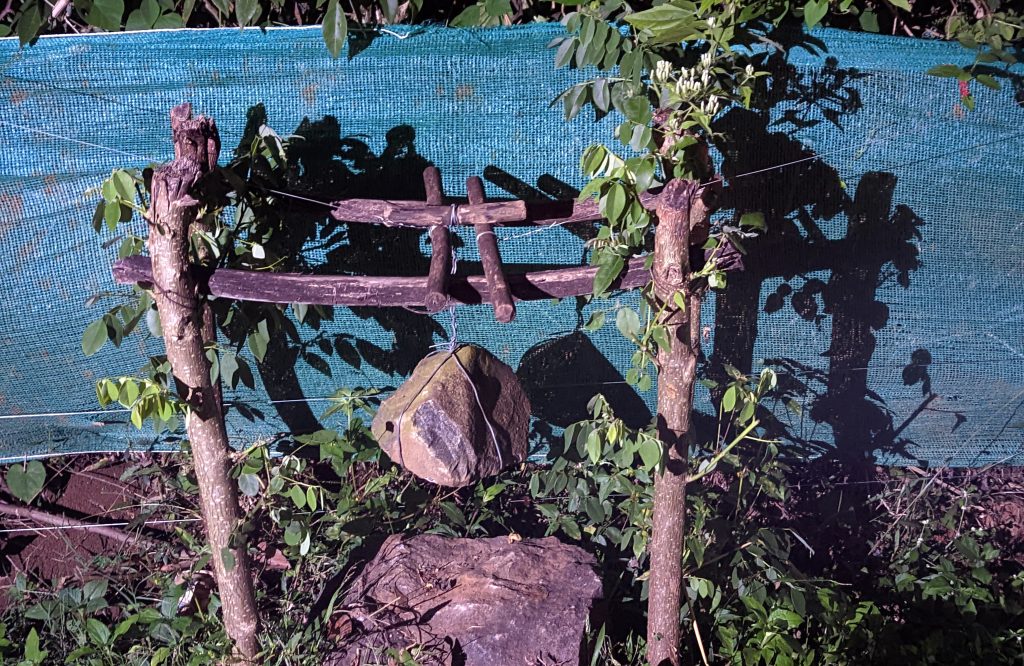
“Cracker and Stone” elephant warning system in Wayanad | Photograph by Shajan MA/WTI
Elephant trenches
Trenches are commonly dug along the boundaries of the villages and/or protected areas. However, their effectiveness is often limited. Poor soil conditions, especially during monsoons make the soil loose, thus creating weak spots for elephants and other animals to breach. Additionally, animals like spotted deer and wild boar that cross the trenches, make them shallower by loosening the soil. Elephants also put in effort to fill the trenches by kicking in soil.
Electric fencing
Electric fences, operating solely on solar energy, emit mild shocks in cycles of 2–3 seconds upon contact, thus keeping the elephants away. However, after initial success, they have proven ineffective against elephants, as they are familiar with its presence and manage to push through the fence poles or break it by using tree trucks. A comparatively more effective option is the electric hanging fence, where wires are suspended above an elephant’s reach, making it difficult for them to breach. Nevertheless, there have been instances where elephants still found a way around by felling trees, trampling non-electric fence pillars, and even intentionally charging towards the fence and withstanding the shock in order to cross over.
Elephant walls
Locally known as ‘aana madhil’, these stone brick barriers serve as strong preventive barriers, but they are costly and thus, not widely constructed. Poorly constructed stone walls slowly erode with time, often exacerbated by elephant attacks. There are cases in Wayanad where elephants step over the walls by setting up a base with tree trunks or simply by standing on their hind legs.
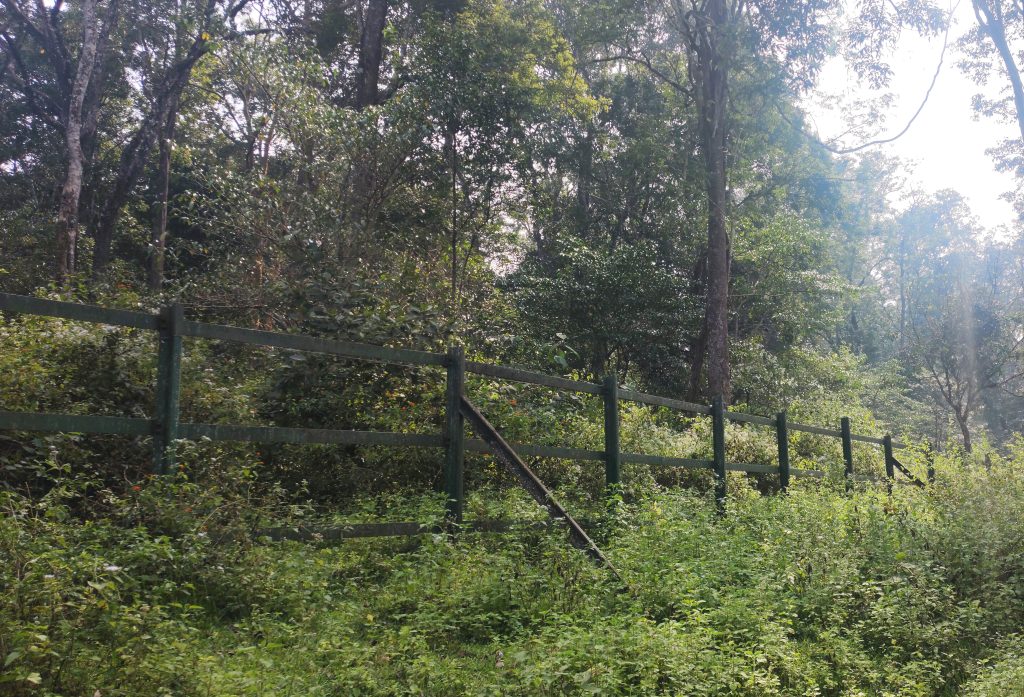
Rail fencing in Wayanad | Photograph by Sujnan MK/WTI
Railway fencing
A permanent and effective barrier that significantly alters the animal’s movement is a strong and hard type of fence that elephants find challenging to damage or cross. However, this isn’t a cost-effective solution. There have also been instances where elephants have even managed to sneak through these rail fences.
Multiple preventive barriers
Over time, I have observed that the combination of trenches and electric hanging fences, though not 100% elephant-proof, has been a relatively effective preventive measure, if maintained thoroughly. The latest upgrade involves covering the pillars with hanging wires, preventing elephants from trampling them.
Living with Gods in God’s Own Country!
While preventing measures keep on evolving, it is also important to note that only a small percentage of farmers actually blame the elephants for these issues. Majority of those affected advocate for improved preventive measures to safeguard their farmlands. As wild habitats keep on shrinking, the interactions between elephants and humans will keep on increasing. As rightly suggested by a local farmer, “മനുഷ്യൻ നിർമ്മിക്കുന്ന തടസ്സങ്ങൾ ആനകൾക്ക് അവയുടെ പരമ്പരാഗത പാതകളിൽ സഞ്ചരിക്കുന്നതിന് തടസ്സമാകും. മാത്രമല്ല ഇത് കൂടുതൽ നാശനഷ്ടങ്ങൾക്കും കാരണമാകുന്നു. മനുഷ്യനിർമ്മിതമായ വേലിയോ കിടങ്ങോ മറികടക്കാനുള്ള ആനകളുടെ ശ്രമം അപകടകരമായ അന്തരീക്ഷം ജനവാസ മേഖലയിൽ സൃഷ്ടിക്കുന്നു”. “At times putting up physical barriers does more damage as they do not allow elephants to take their natural migratory route. To go around a fence or trench elephants will need to stay in a particular patch for longer, also increasing the chances of a negative interaction with humans.”
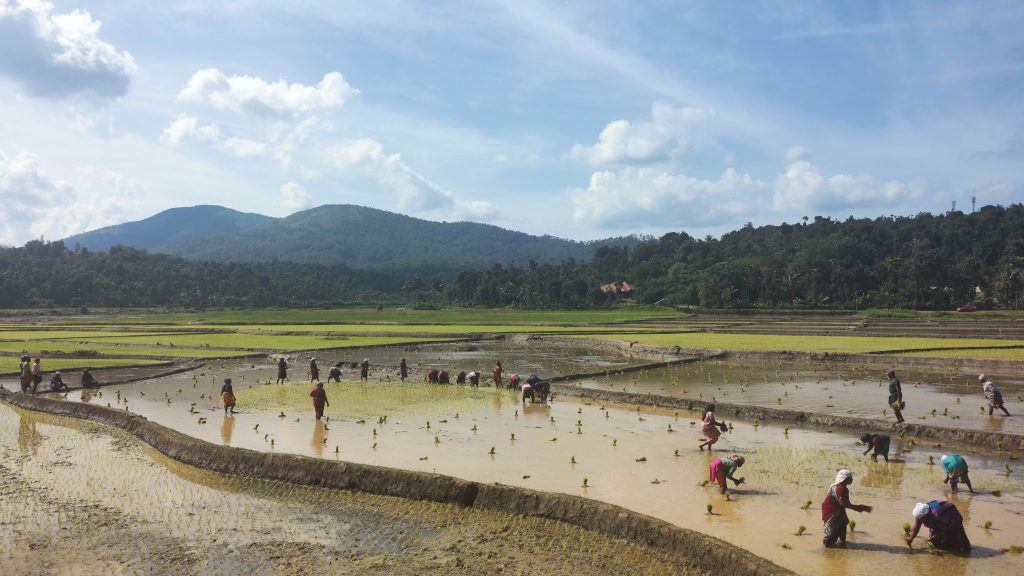
Crop cultivation in fringe villages of Wayanad | Photograph by Sujnan MK/WTI
Chasing elephants using fire crackers or light beams too doesn’t help as distressed individuals are more likely to go on a rampage. The farmers understand that it is elephants who have created our forests and are the reason for the life sustaining air we breathe, the fertile soil we grow our crops on, and the rainfall that ensure our harvests. Wayanad’s ancestral tribal people consider the sight of elephants coming to consume their crops as a sign of good fortune. Kattunayakan, the ancestoral tribal community, display tolerance and acceptance of wild animals, characterised by a deep sense of coexistence involving three central ideas: wild animals as rational conversing beings; wild animals as gods, teachers, and equals; and wild animals as relatives with shared origins practicing dharmam. Most importantly, they adore the presence of elephants in their farmland.
In a country where hundreds of elephants die to electrocution, poaching, poisoning and train hits every year, the deep affection and understanding of locals towards these gentle giants in Wayanad is worth celebrating and protecting.
Sujnan is our field biologist engaged with the Wayanad Conflict Mitigation Project

